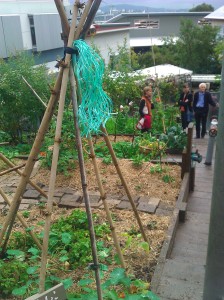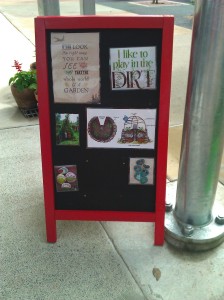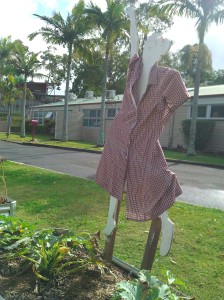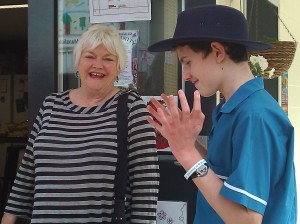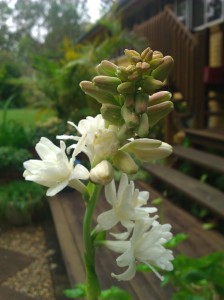THEY can run NAPLAN tests til the cows come home, but if academics truly want to lift the education experience for young children, they need look no further than a scheme I spent time examining recently.
It’s a program where children taste and smell the curriculum and one whiff tells me it should be compulsory for all primary schools.
I travelled with a group of teachers and passionate practitioners to schools where the Stephanie Alexander Kitchen Garden program is embedded. I spoke to nine-year-olds who take responsibility for onion and bean crops, who know how to calculate plants per square metre, research what season broccoli is sown, can work out how to chop enough tomatoes for a lunch for 25, and can list the benefits of raw vegetables over canned.
It was uplifting, breathtaking, moving to say the least, to see the pride and pleasure children as young as six take in their lettuces, garlic, eggplant and potato plants and 10-year-olds designing imaginative menus, placemats, featuring poetic beliefs they have composed about food, health and nature. Their knowledge and confidence in gardening and cooking skills was a joy to behold.
It’s lifelong education, delivered in school grounds and kitchens with its eye on curriculum and its heart in getting children to observe and learn about the earth, fresh food, healthy bodies, the importance of community and how it all is interdependent.
This wonderful scheme, now in 297 schools around Australia, has as its highest aims the end of childhood obesity from bad eating habits, and teaching the lost skills of growing and preparing fresh food and sharing it with friends around a beautifully laid table. It has been show to significantly increase children’s willingness to try new foods.
But in practical terms, it enhances and reinforces the educational experience of learning English, maths, geography, history, science and social studies in hands-on and engaging lessons. The children are outside, they are exercising, they are moving, working in teams, talking to each other, solving group problems, making plans and managing time. They are having experiences that will inform and influence the rest of their life.
Stephanie’s concern was not merely the growing obesity in Australian children, but the discovery of how many did not know where their food came from or indeed rarely or never sat at a table for meals or used a knife and fork. Without judging modern parents who are under increasing time pressures to work, run households, shop, cook and parent, she saw an opportunity to stop the rot.
For children who learn better outside of the classroom, the SAKG program has already shown improved results and behavioural problems and truancy have lessened and there has been an 86 pr cent improvement in team work skills reported in schools where it’s installed.
An Australian Government funded-assessment found real health behaviour change in participating children, families and school communities.
What subliminal enrichment for kids to skip past abundant garden beds of flourishing vegetables placed on the walkways between school buildings. What fun to design, build and dress scarecrows for the tomato crop, or collect eggs from the schoolyard chooks.
How much more does a maths lesson mean when it involves calculating the yield per bed per season of carrots that you plant, pick and eat, measuring ingredients for a soup, omelette or polenta chips.
These are schools that have no trouble attracting parents to working bees. They come in droves and in happy expectation they will learn, teach and enjoy garden and cooking skills, the shared camaraderie of a school community, make meaningful friendships with other parents and teachers in the process.
The schools with this program have truly regained their place as the hub of the community where businesses and local identities link with them in partnerships for mutual benefit. The local cafes send their spent coffee grinds, restaurants and take-aways their food scraps and other composting materials like waste paper, the mowing contractor saves himself tip fees by bringing his grass clippings to the school for mulch; hardware stores offer product and services and reap more than an equal return from this sort of in-kind promotion.
EVERYBODY gains when schools over reach.
It happens, of course, with a group mentality, a shared commitment, started by the wonderful Stephanie and supported by the teachers and practitioners who have caught her vision around the country.
One of the earliest to share the dream was Brisbane’s Bulimba State School principal Michael Zeuschner, whose school has won a series of awards and special mentions for sustainability, green and healthy environments and excellence in schools .
Michael’s school is built on the vertical, so all the kitchen garden beds are staggered up its hilly grounds and no space is wasted.
He was inspired by both Stephanie and a book by David Louv, Last Child in the Woods: Saving our Children from Nature-Deficit Disorder.
Louv suggests children’s shrinking area of geographical freedom around their homes has caused the broken bond between them and nature. Where once they walked, explored, dawdled around neighbourhoods and scrambled through bush and along creek banks, the radius of this childhood experience has shrunk to one tenth of what it was 40 years ago.
Michael is the first to acknowledge the importance of community in making the scheme work. The generosity and support local businesses give in kind and time to the school are a big part of its success, and its value is returned 10-fold in threading the people together, bringing expertise and enrichment to the school environment that might not otherwise happen. Once a month, the students prepare a “thank you’’ meal from their garden produce to which they invite local community members. They take great pride in planning and preparing the menu, dressing and laying the tables, writing the placemats and serving on the day.
Proud as he is of his school’s lead in this area, quietly spoken Michael Zeuschner doesn’t seem like someone much concerned with awards. He is more impressed with the way the school is integrated into the community and supports the adage “it takes a village to raise a child’’.
There are some things in life for which you want to get down on your hands and knees and give thanks to whoever is your God.
This is one.
A ROSE BY ANOTHER NAME …
My mysterious beauty unfolding at the top of a long shoot in what I thought was a pot of lillies is revealed.
It is a glorious tuberose, ( polianthes tuberosa) which is not actually any kind of rose. It’s name derives from the Greek word polianthes, which mean many flowers. The tuberosa is latin for swollen tuber root. It’s related to the agaves and thought to be a native of Mexico along with all the other polianthes and its pungent and opulent heady perfume is legendary. It has been described as carnal.
The prudish straight-laced Victorians forbade young girls to inhale its scent for fear they might have a spontaneous orgasm. So when I took it along to my local gardening club to enter it in the most scented specimen section, I stood back and waited for an interesting reaction from the members who sniff and vote.
The earth didn’t move for them – but I won second prize.
Now its fragrance is filling the house .
I live in hope.



